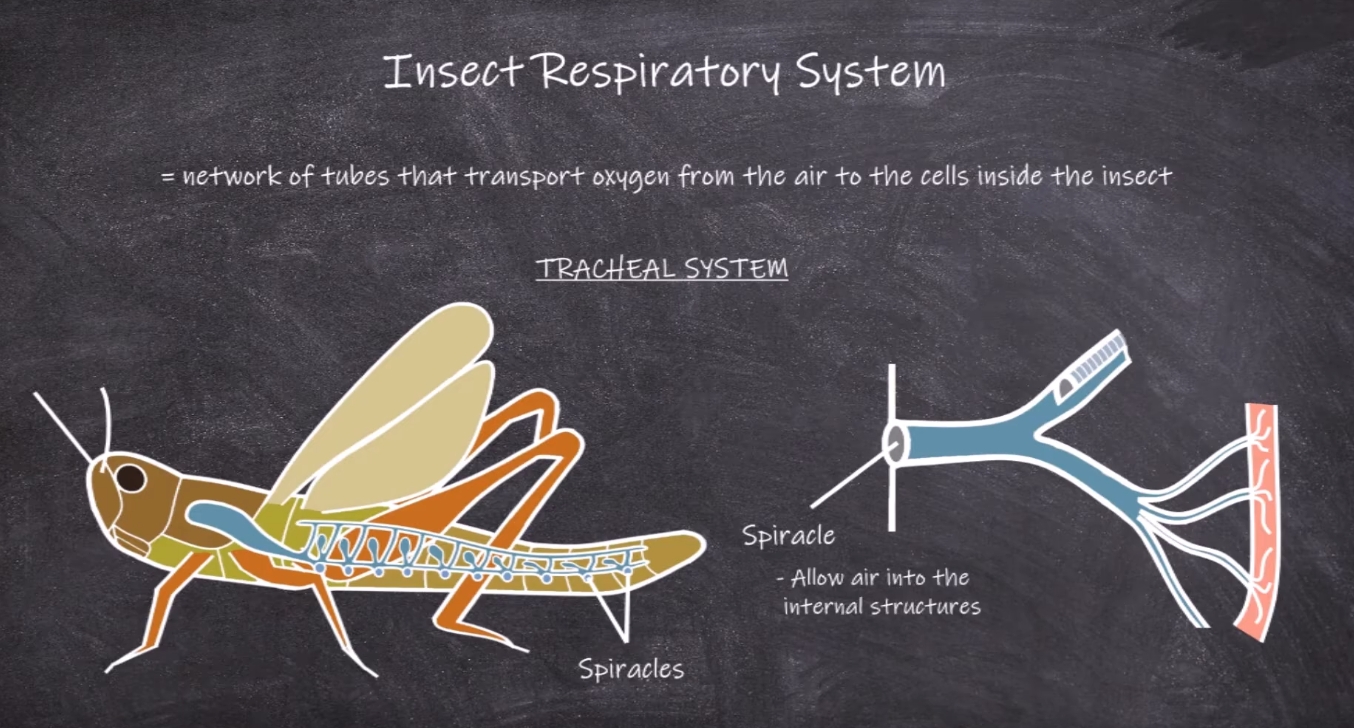Insects have a fascinating and effective way of breathing that sets them apart from other living creatures. Have you ever wondered how a creature as small as an ant breathes, especially considering it has no lungs? How about the buzzing bee in your garden? The answer lies in a complex network of tiny tubes called tracheae.
How do Insects Breathe?
Contents
The tracheae, the insect’s breathing apparatus, is an intricate network that allows air to enter the insect’s body through a series of holes along the abdomen. It’s an astounding design, isn’t it? The air then finds its way through the blind-ended tracheae, reaching every nook and cranny within the insect’s body.
Interestingly, the size of an insect has a direct correlation to the length of its tracheae – the bigger the insect, the longer the tracheae. Now, that makes you wonder, doesn’t it? How might a butterfly breathe compared to a tiny aphid?
Moreover, the tracheae don’t just end there. They pass on fine branches, known as tracheoles, throughout the body. Picture it like a miniature tree within the insect, branching out to distribute oxygen to all parts. Some insects even have multiple pairs of tracheae, one pair on the dorsal side and the other on the ventral side.
Respiratory System of Insects vs. Humans
Let’s make a comparison. Humans breathe through lungs, inhaling oxygen and exhaling carbon dioxide. In contrast, insects breathe through spiracles, tiny openings in the thorax and abdomen. Picture these spiracles like minuscule nostrils dotting the insect’s body.
| Aspect | Human Respiratory System | Insect Respiratory System |
|---|---|---|
| Main Organ | Lungs | Tracheae |
| Inhale/Exhale Mechanism | Nostrils/Mouth | Spiracles |
| Gas Exchange Location | Alveoli in lungs | Tracheal System |
| Influence of Body Size | Body size influences lung capacity | Body size influences length of tracheae |
| Efficiency | Lower, in proportion to body size | Higher, in proportion to body size |
You may be surprised to learn that insects have a more efficient respiratory system than humans. Despite their small size, they can take in greater volumes of oxygen proportional to their body size compared to humans. Isn’t nature fascinating?
Breathing Mechanism: Passive Diffusion vs Active Ventilation
Insects use two primary methods to facilitate the movement of gases within their tracheal system: passive diffusion and active ventilation. Smaller insects rely almost entirely on passive diffusion, aided by their physical activity. Larger insects, however, might require active ventilation of the tracheal system, particularly when active or under heat stress.
Think of it like a marathon runner versus a casual jogger. The runner, like the larger, more active insect, needs more oxygen and hence, a more intensive breathing mechanism.
- Passive Diffusion: This is akin to a light jog where breathing is steady and less intensive. Small insects typically use this method, letting the air naturally flow into the tracheae and circulate throughout their bodies.
- Active Ventilation: Consider this the marathon run. Large insects may employ this technique when under heat stress or high activity. They actively control the flow of air by opening and closing spiracles and using abdominal muscles to manipulate body volume.
Insect Respiratory System: Spiracles, Tracheae, and Book Lungs
The insect respiratory system differs vastly from ours and, for that matter, other animals. The absence of lungs might make you believe that their breathing mechanism is a simple one, but it’s a fascinatingly intricate process.
Spiracles
Spiracles are the insects’ answer to nostrils. Located along the sides of their bodies, these tiny holes allow them to take in oxygen directly from the air. Acting like a gateway to the insect’s respiratory system, they change in size based on the insect’s oxygen requirement.
| Oxygen Need | Spiracle Size |
|---|---|
| High | Large |
| Low | Small |
| Very Low | More Open |
When in need of a higher oxygen supply, the spiracles open up wide to allow more air in. Conversely, when the need is low, they contract to small openings, ensuring an optimal amount of oxygen enters the body.
Tracheae
Tracheae are essentially the insects’ breathing tubes. These tubules transport air from the spiracles directly to the hemolymph, a fluid in insects akin to blood in mammals. This mechanism allows insects to bypass the circulatory system in gas exchange, making it an incredibly efficient process!
Book Lungs
And then we have book lungs. While the term ‘lung’ might be misleading, these are nothing like the lungs we’re familiar with. Composed of layered folds, they facilitate the movement of air and gas exchange, just like human lungs, but in a much more compact space.
Insect Sizes: Does Size Matter?
Insects are the most diverse group of organisms on Earth, with sizes ranging from the minuscule fairyfly to the enormous Goliath beetle. Does size affect their ability to breathe? Let’s find out.
| Insect | Body Length | Weight |
|---|---|---|
| Fairyfly 🧚♀️ | 0.0014 mm | Less than 1 mg |
| Goliath Beetle 🐞 | Up to 6 inches | Up to 3.5 ounces |
In essence, the insect respiratory system is incredibly efficient, but it isn’t adaptable for larger bodies. This limitation is one of the reasons why insects don’t grow to the size of, say, elephants!
The Science of Breathing: Oxygen and Carbon Dioxide
Insects breathe in oxygen and exhale carbon dioxide, much like us humans. Their spiracles intake oxygen, and tracheae distribute it across the body. The carbon dioxide produced as a waste product is expelled back out through the same spiracles.
But what about aquatic insects? Well, they’ve evolved to extract oxygen directly from water through gills or absorb it through their body surface. Quite ingenious, isn’t it?
Breathing Controls and Adaptations
Control of respiration in insects is similar to humans, with the level of oxygen intake and carbon dioxide release regulated based on the insect’s activity and environmental conditions. Some insects even have the ability to remain submerged underwater, holding their breath for extended periods!
The Inside Story: Internal Respiratory System
The internal respiratory system in insects consists of four crucial parts:
- Tracheal system: Tubes running throughout the body, delivering oxygen from the air sacs to the individual cells.
- Air sacs: Balloon-like structures acting as oxygen reservoirs and help regulate the insect’s internal temperature.
- Spiracles: Tiny openings in the insect’s exoskeleton that allow carbon dioxide to escape.
- Malpighian tubules: These remove waste products from the cells, collecting and transporting them to the insect’s anus for excretion.
Wrapping it Up
From gills to spiracles, insects have evolved a myriad of ways to breathe and survive in all sorts of environments. Their fascinating and highly efficient respiratory systems, intricate yet elegant, remind us of the wonders of evolution and adaptation. So the next time you see an insect buzzing around, remember, it’s not just breathing but living through a remarkable biological feat!
FAQs about Insects Breathe
Сan scorpions breathe underwater?
No, scorpions cannot breathe underwater. While they can survive briefly underwater due to their ability to store oxygen, they lack the adaptations necessary for extracting oxygen from water like aquatic animals do. Although extinct sea scorpions could breathe out of water, modern scorpions are not equipped for extended underwater survival or movement.
Do all insects breathe the same way?
No, insects breathe in different ways depending on their species. Some insects have a tracheal system that allows them to take in the air directly from the environment, while others rely on diffusion to take in oxygen from the atmosphere.
How do insects get oxygen into their bodies?
Insects use a variety of methods to get oxygen into their bodies. Some insects have a tracheal system that allows them to take in the air directly from the environment, while others rely on diffusion to take in oxygen from the atmosphere.
Do all insects need air to live?
Some insects can survive without air by breathing through their skin or gut. However, these insects typically only live for a few days without perspective.
How do insects breathe in water?
Some bugs, like dragons and diving beetles, have a unique organ called a gill that they can use to breathe underwater. Like mosquitoes and water striders, other bugs cannot take a breath underwater.



